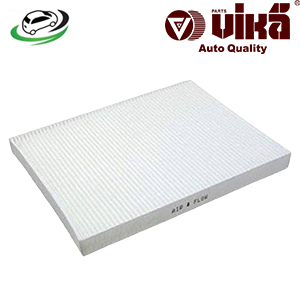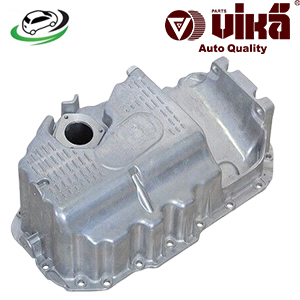-19%
Get Engine Sump AUDI A3 Hatchback/Convertible / VW Touran I (1T1/1T2)/Golf Plus/V/V1/Passat B7/Jetta Mk5/Eos (1F7/1F8) 03C103603T
The engine sump, also known as the oil pan, is a critical component of an internal combustion engine’s lubrication system. It serves as a reservoir for engine oil, ensuring that the engine is adequately lubricated to minimize friction and wear. In this comprehensive guide, we will explore the function, types, benefits, maintenance, and common issues associated with engine sumps.
Function of an Engine Sump
Oil Reservoir
The primary function of the engine sump is to act as a reservoir for engine oil. It holds the oil that lubricates the engine’s moving parts, ensuring they operate smoothly and efficiently.
Oil Cooling
As the engine oil circulates through the engine, it absorbs heat from the moving parts. The sump allows the oil to cool down before it is recirculated, helping to regulate the engine’s temperature.
Debris Collection
The sump collects debris and contaminants that may be present in the engine oil. These can include metal shavings, carbon deposits, and other particles that could harm the engine.
Oil Pump Feeding
The engine sump supplies oil to the oil pump, which then distributes the oil throughout the engine to lubricate various components.
Types of Engine Sumps
- Wet Sump
- Construction: The most common type, where the oil pan is located at the bottom of the engine.
- Advantages: Simple design, cost-effective, and easy to maintain.
- Disadvantages: Oil starvation can occur during high-speed cornering or off-road driving.
- Dry Sump
- Construction: Uses an external reservoir and a series of pumps to circulate oil.
- Advantages: Improved oil control, reduced risk of oil starvation, and allows for lower engine placement, enhancing vehicle handling.
- Disadvantages: More complex and expensive, requiring additional components and maintenance.
- Structural Sump
- Construction: Integrates the oil pan into the structural design of the engine, providing additional rigidity.
- Advantages: Enhances engine stiffness and durability, often used in performance and racing applications.
- Disadvantages: Can be more difficult to service and replace.
Benefits of High-Quality Engine Sumps
Enhanced Lubrication
High-quality engine sumps ensure consistent and reliable oil supply, reducing friction and wear on engine components. This results in smoother engine operation and extended engine life.
Improved Engine Cooling
A well-designed sump helps dissipate heat from the engine oil more effectively, contributing to better overall engine cooling and performance.
Reduced Risk of Oil Starvation
Quality engine sumps are designed to minimize the risk of oil starvation during extreme driving conditions, such as high-speed cornering or off-road driving.
Increased Durability
High-quality sumps are constructed from durable materials that can withstand the stresses of engine operation, reducing the likelihood of damage and the need for frequent replacements.
Better Debris Management
Effective sumps help collect and manage debris and contaminants, preventing them from circulating through the engine and causing damage.
Maintenance of Engine Sumps
Regular Inspection
- Visual Checks: Regularly inspect the engine sump for signs of leaks, cracks, or damage. Look for oil stains or puddles under the vehicle.
- Oil Level: Check the oil level regularly to ensure it is within the recommended range. Low oil levels can indicate a leak or other issues.
Oil Changes
- Routine Changes: Follow the manufacturer’s recommended oil change intervals. Regular oil changes help maintain the quality of the oil and the performance of the sump.
- Oil Quality: Use the recommended oil type and viscosity for your engine. High-quality oil helps improve lubrication and cooling efficiency.
Cleaning and Debris Removal
- Drain and Clean: During oil changes, drain the oil completely and inspect the sump for debris or sludge. Clean the sump as needed to remove contaminants.
- Magnetic Drain Plug: Consider using a magnetic drain plug to capture metal particles and keep them out of the engine oil.
Gasket and Seal Replacement
- Inspect Gaskets: Check the sump gasket and seals for signs of wear or damage. Replace them if they show signs of leaking or deterioration.
- Proper Installation: Ensure gaskets and seals are properly installed during oil changes or sump replacements to prevent leaks.
Common Issues with Engine Sumps
Oil Leaks
- Symptoms: Oil puddles under the vehicle, low oil levels, and oil stains around the sump.
- Causes: Damaged or worn gaskets, cracks in the sump, or loose bolts can cause oil leaks.
Cracks and Damage
- Symptoms: Visible cracks, oil leaks, and unusual engine noises.
- Causes: Physical impact, excessive engine vibration, or manufacturing defects can lead to cracks or damage in the sump.
Oil Starvation
- Symptoms: Engine knocking, overheating, and reduced performance.
- Causes: Inadequate oil levels, poor sump design, or extreme driving conditions can cause oil starvation.
Sludge and Debris Buildup
- Symptoms: Reduced oil flow, overheating, and engine wear.
- Causes: Infrequent oil changes, poor oil quality, and lack of maintenance can lead to sludge and debris buildup in the sump.
Replacement of Engine Sumps
Tools and Equipment
- Basic Tools: Wrenches, socket sets, screwdrivers, and a drain pan.
- Replacement Sump: Ensure the new sump is compatible with your vehicle’s make and model.
- Gasket and Seals: New gaskets and seals to ensure a proper seal during installation.
Steps for Replacement
- Safety First: Ensure the vehicle is securely supported on jack stands or a lift before starting the replacement process.
- Drain Oil: Drain the engine oil completely into a drain pan.
- Remove Old Sump: Remove the bolts securing the old sump to the engine. Carefully detach the sump and remove it.
- Clean Surface: Clean the mating surface on the engine block to ensure a proper seal with the new sump.
- Install New Sump: Place the new sump in position, ensuring it is properly aligned. Install new gaskets and seals as needed.
- Secure Bolts: Tighten the bolts in a crisscross pattern to ensure even pressure and a proper seal.
- Refill Oil: Refill the engine with the recommended type and amount of oil.
- Check for Leaks: Start the engine and check for any signs of leaks around the sump.
Professional Assistance
If you are unfamiliar with vehicle maintenance or the replacement process, it is advisable to seek professional assistance to ensure proper installation and avoid potential issues.
Follow us on Facebook for more parts.





